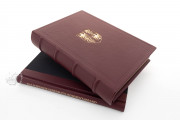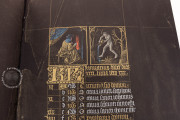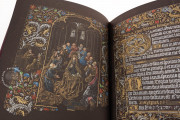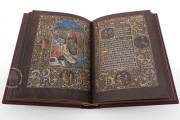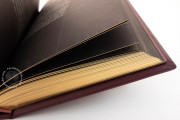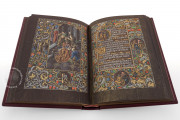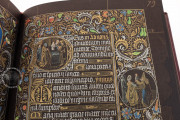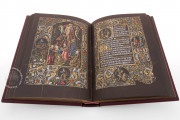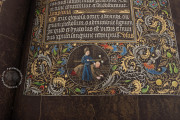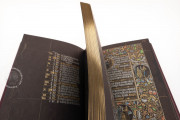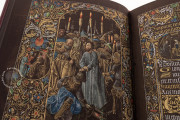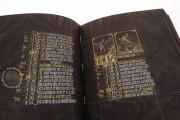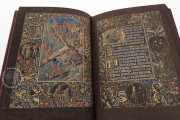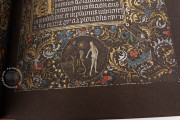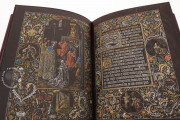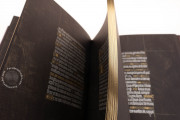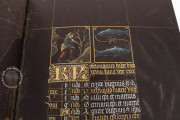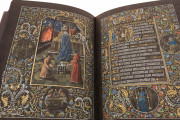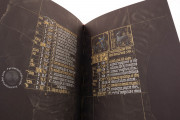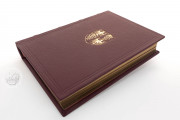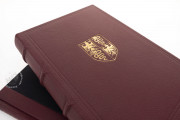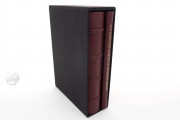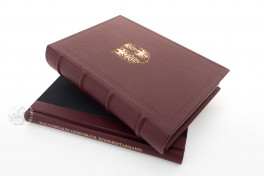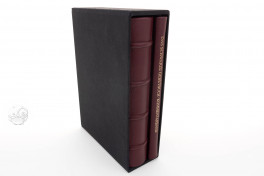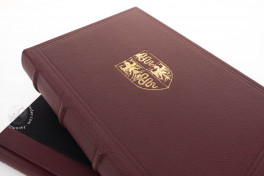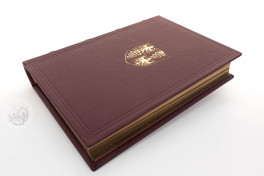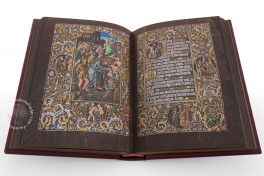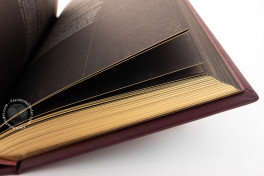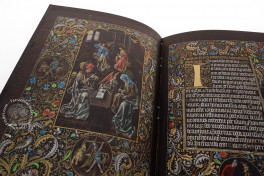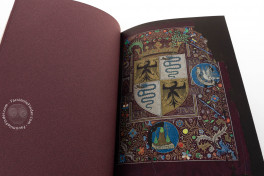The Black Prayer Book, also known as the Prayer Book of Galeazzo Maria Sforza, stands as one of the most opulent and exquisite examples of its genre. Originating from the third quarter of the fifteenth century, it was crafted in Bruges, Flanders. It boasts fifteen full-page miniatures, twenty-four small-format miniatures, and seventy-one meticulously detailed border vignettes, all serving as a testament to the illuminator's exceptional artistic skills.
Penned in Latin, the Black Prayer Book contains a collection of prayers and devotional texts intended for private use. This manuscript is known by various names, one of which derives from its distinctive feature of having its pages dyed in black. The other name pays homage to Galeazzo Maria Sforza, Duke of Milan, who acquired the book shortly after its completion, during the years 1466-1476.
The Three-dimensional Feature of the Black Prayer Book
The manuscript iconography is mainly dominated by the use of gold and silver, which highlight and increase the luminosity of all the other colors applied. The elegant contrast between black tint and shimmering colors is clearly visible in the superb full-page miniatures, such as the four Evangelists miniature (fol. 32v.). Here, the room in which Mark, Matthew, Luke, and John sit is surrounded by lavish borders on both sides. Colors like gold, silver, green, blue, and brown stand out distinctly against the black ground.
Every page is decorated with marvelously detailed branches of acanthus, flowers, fruit, and birds, and these highly decorated borders act as an enlightening frame both to the full-page and small-format miniatures which display an exquisite rendition of the three-dimensional feature.
This effect is achieved by a few artistic means, such as sparse hatching in gold and silver and a few delicate rays of light. The text, written in gold and silver, is accentuated by silver and golden decorated initials as well as the line filler, making for the stern but elegant impression conveyed by the manuscript. The illuminator, until recent times believed to be Philippe de Mazerolles, shows great mastery of characterization.
Gothica Semiquadrata
The Black Prayer Book displays a beautiful example of Gothic script, specifically Textus Semiquadratus or Semifractus, an intermediate between the Quadratus and Rotundus. In this case, the letters have quadrangles only at the headline and not at the baseline. There is a predominance of uncial d with the sloping shaft, many of which fuse with the succeeding letter.
Charles the Bold and the Burgundian court
The patron of the Black Prayer Book was probably Charles the Bold, Duke of Burgundy (1433-1477), a powerful politician and lover of the arts. He was killed in an attack during the battle of Nancy, but his strong personality is still reflected in the manuscript, which, with its rare technique and costly material, echoes an exclusive aesthetic fashion typical of the Burgundian court. The codex later came into the possession of Galeazzo Maria Sforza, although it is still unclear how.
We have 3 facsimiles of the manuscript "Black Prayer Book of Galeazzo Maria Sforza":
- Schwarze Gebetbuch des Herzogs Galeazzo Maria Sforza facsimile edition published by Oesterreichischen Staatsdruckerei, 1930
- Schwarze Gebetbuch (Morocco Leather Edition) facsimile edition published by Insel Verlag, 1982
- Schwarze Gebetbuch (Velours Leather Edition) facsimile edition published by Insel Verlag, 1982


